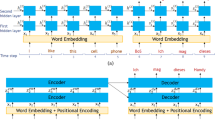Abstract
The Indian classical music system follows a cyclic perception as against the linear approach of reductionist concept in Western music. In every tāla, there exists a pattern of tangible and intangible events that keeps on repeating in smaller cycles. If such repeating pattern is detected, it will be an important step in the context of rhythm analysis of  music and also for rhythm-based retrieval. In this work, a simple but novel methodology is presented to detect two important rhythmic aspects of tāla namely, tempo and mātrā. It is focussed on the detection of the repeating structure by analysing the tablā signal. The work extends our earlier effort that deals with only the electronic tablā signal which is well behaved. In this work, pitfalls of the earlier methodology are analysed and corrective measures are adopted to formulate the improved methodology. The present work computes and tunes the parameters based on the signal content and can work with the signals of wide variety, including the not so well-behaved real tablā signal, i.e. the signal captured when tablā is played by human artist. Experiment is carried out with a large number of electronic and real tablā clips reflecting variety of tempo and tāla. Performance of the proposed methodology is also compared with that of the earlier one. Result indicates the superiority and effectiveness of the proposed methodology.
music and also for rhythm-based retrieval. In this work, a simple but novel methodology is presented to detect two important rhythmic aspects of tāla namely, tempo and mātrā. It is focussed on the detection of the repeating structure by analysing the tablā signal. The work extends our earlier effort that deals with only the electronic tablā signal which is well behaved. In this work, pitfalls of the earlier methodology are analysed and corrective measures are adopted to formulate the improved methodology. The present work computes and tunes the parameters based on the signal content and can work with the signals of wide variety, including the not so well-behaved real tablā signal, i.e. the signal captured when tablā is played by human artist. Experiment is carried out with a large number of electronic and real tablā clips reflecting variety of tempo and tāla. Performance of the proposed methodology is also compared with that of the earlier one. Result indicates the superiority and effectiveness of the proposed methodology.





Similar content being viewed by others
References
Bhaduri S, Saha S, Mazumdar C (2014) Matra and tempo detection for indic Tala-s. In: Advanced computing and informatics proceedings of the second international conference on advanced computing, networking and informatics (ICACNI-2014), vol 1, pp 213–220
Clayton M (2000) Time in Indian music: rhythm, metre and form in North Indian rag performance. Oxford University Press, Oxford
Courtney DR (2000) Fundamentals of Tabla. Sur Sangeet Services, 4th edn (October 1, 2013)
Raman CV, Kumar S (1920) Musical drums with harmonic overtones. Nature 104(2620): 453–454
Bhat R (1991) Acoustics of a cavity-backed membrane: The indian musical drum. J Acoust Soc Am 90:1469–1474
Malu SS, Siddharthan A (2000) Acoustics of the indian drum. Technical report, Cornell University
Goto M, Muraoka Y (1995) Music understanding at the beat level real-time beat tracking for audio signals. In: IJCAI-95 workshop on computational auditory scene analysis
Chatwani A (2003) Real-time recognition of tabla bols. Technical report, Senior Thesis, Princeton University
Patel A, Iversen J (2003) Acoustic and perceptual comparison of speech and drum sounds in the north indian tabla tradition: an empirical study of sound symbolism. In: Proceedings of the 15th international congress of phonetic sciences (ICPhS)
Gillet O, Richard G (2003) Automatic labelling of tabla signals. In: Proc. ISMIR
Samudravijaya K, Shah S, Pandya P (2004) Computer recognition of tabla bols. Technical report, Tata Institute of Fundamental Research
Essl G, Serafin S, Cook P, Smith J (2004) Musical applications of banded waveguides. Comput Music J 28:51–63
Chorida P (2005) Segmentation and recognition of tabla strokes. In: Proceedings of the ISMIR
Dixon S (2007) Evaluation of the audio beat tracking system beatroot. J New Music Res 36:39–50
Davies M, Plumbley M (2007) Context-dependent beat tracking of musical audio. IEEE Trans Audio Speech Lang Process 15:1009–1020
Linxing Xiao, Aibo Tian WL, Zhou J (2008) Using a statistic model to capture the association between timbre and perceived tempo. In: ISMIR 2008: Proceedings of the 9th international conference of music
Holzapfel A, Stylianou Y (2009) Rhythmic similarity in traditional turkish music. In: Proceedings of international conference on music information retrieval (ISMIR)
Gulati S, Rao V, Raol P (2011) Meter detection from audio for indian music. In: Proceedings of the international symposium on computer music modeling and retrieval (CMMR), pp 34–43
Miron M (2011) Automatic detection of hindustani talas. Technical report, Master’s Thesis, Universitat Pompeu Fabra, Barcelona, Spain
Bhaduri S, Saha S, Mazumdar C (2014) A novel method for tempo detection of INDIC Tala-s. In: Emerging applications of information technology (EAIT), 2014 fourth international conference of IEEE, pp 222–227
Lartillot O, Toiviaine P (2007) A matlab toolbox for musical feature extraction from audio. In: Proceedings of the international conference on digital audio effects
Klapuri A (1999) Sound onset detection by applying psychoacoustic knowledge. In: Proceedings of the international conference on acoustics, speech, and signal processing, pp 3089–3092
Acknowledgments
We acknowledge the contribution of Rupak Bhattacharjee(mailto:rupaktabla@gmail.com) for playing and recording various clips of real tablā. We have also downloaded few audio clips of real tablā(available freely) from the website http://www.tablaradio.com.
Author information
Authors and Affiliations
Corresponding author
Rights and permissions
About this article
Cite this article
Bhaduri, S., Das, O., Saha, S.K. et al. Rhythm analysis of tablā signal by detecting the cyclic pattern. Innovations Syst Softw Eng 11, 187–195 (2015). https://doi.org/10.1007/s11334-015-0247-5
Received:
Accepted:
Published:
Issue Date:
DOI: https://doi.org/10.1007/s11334-015-0247-5





 Music
Music